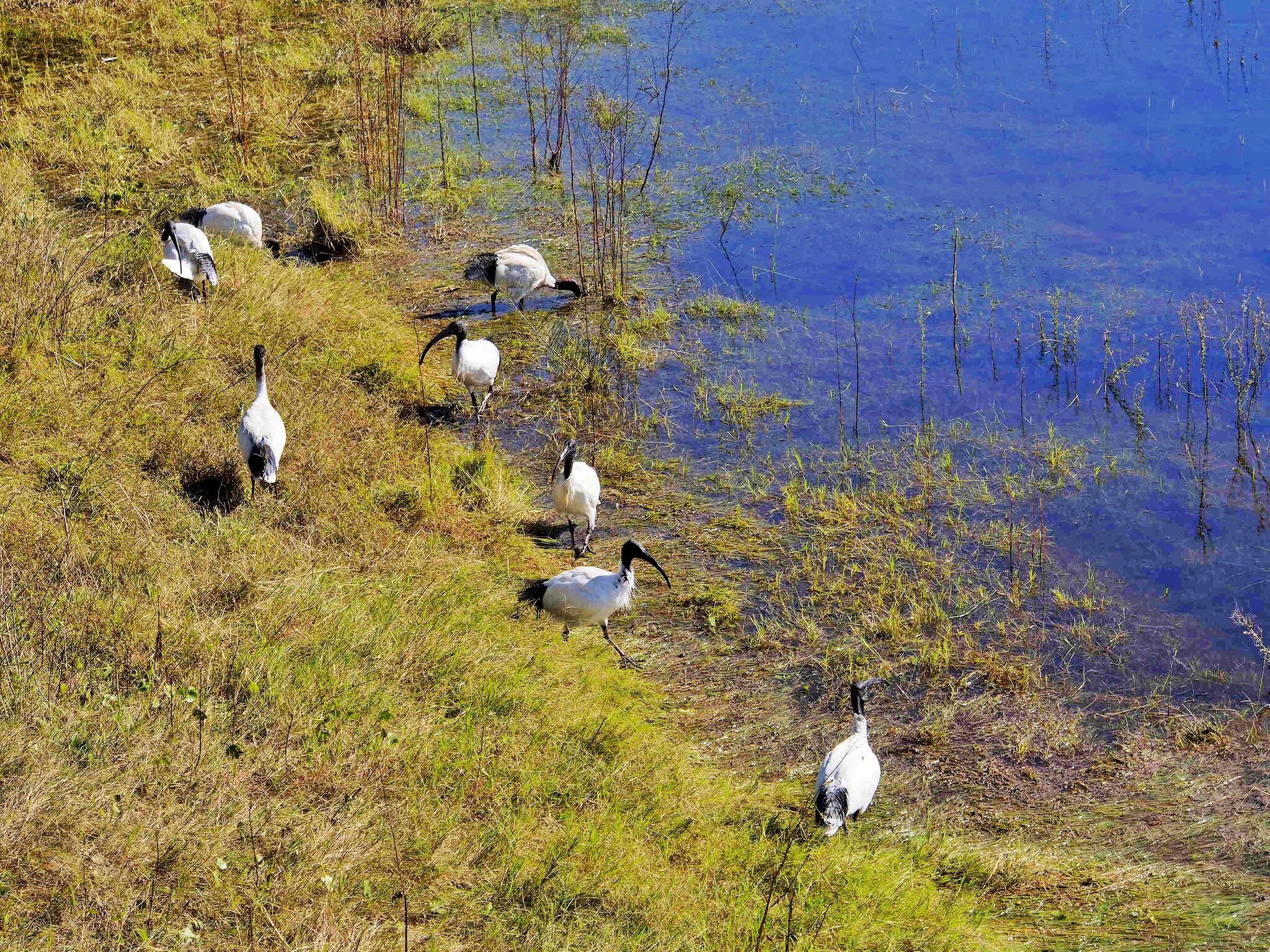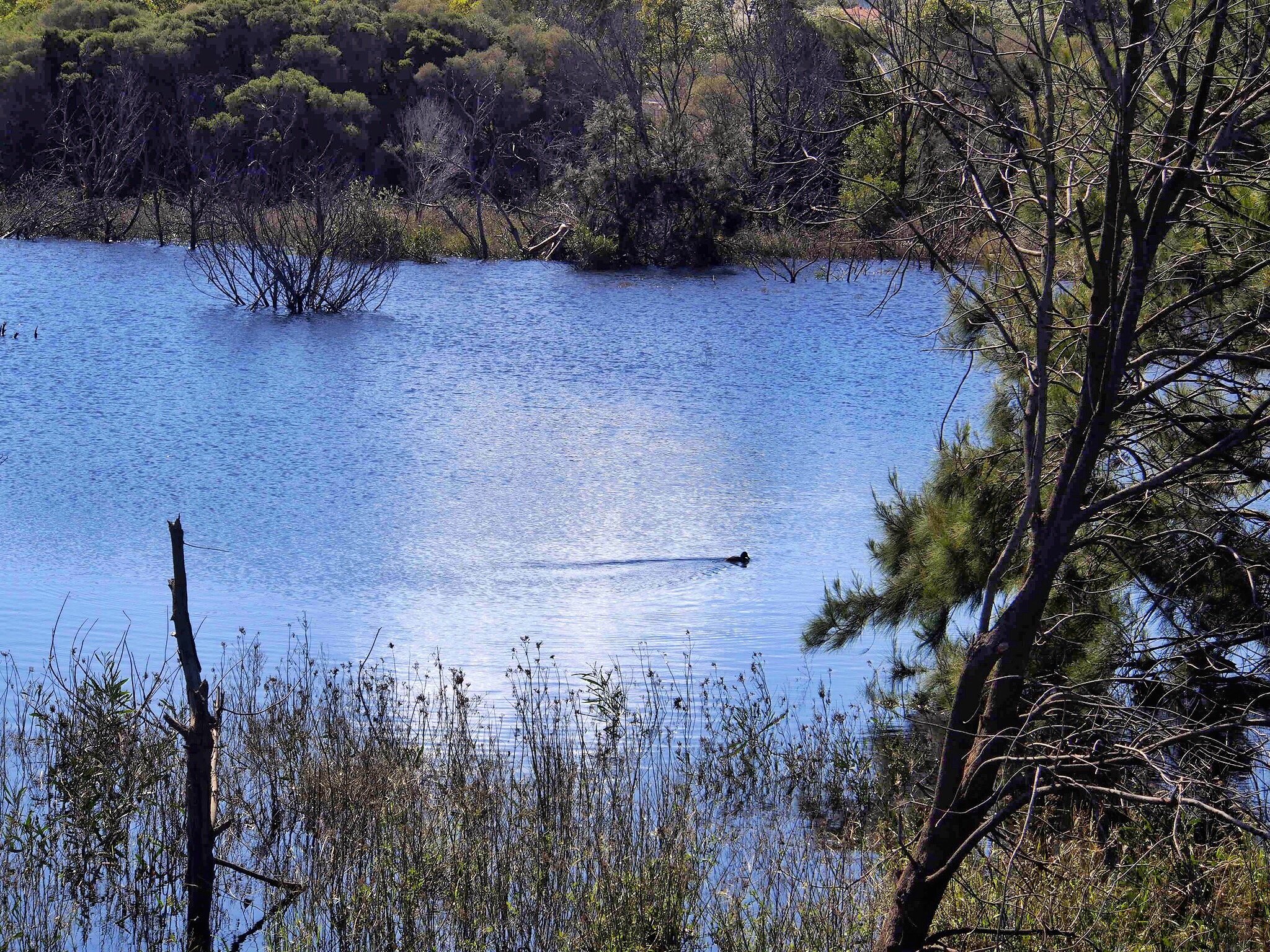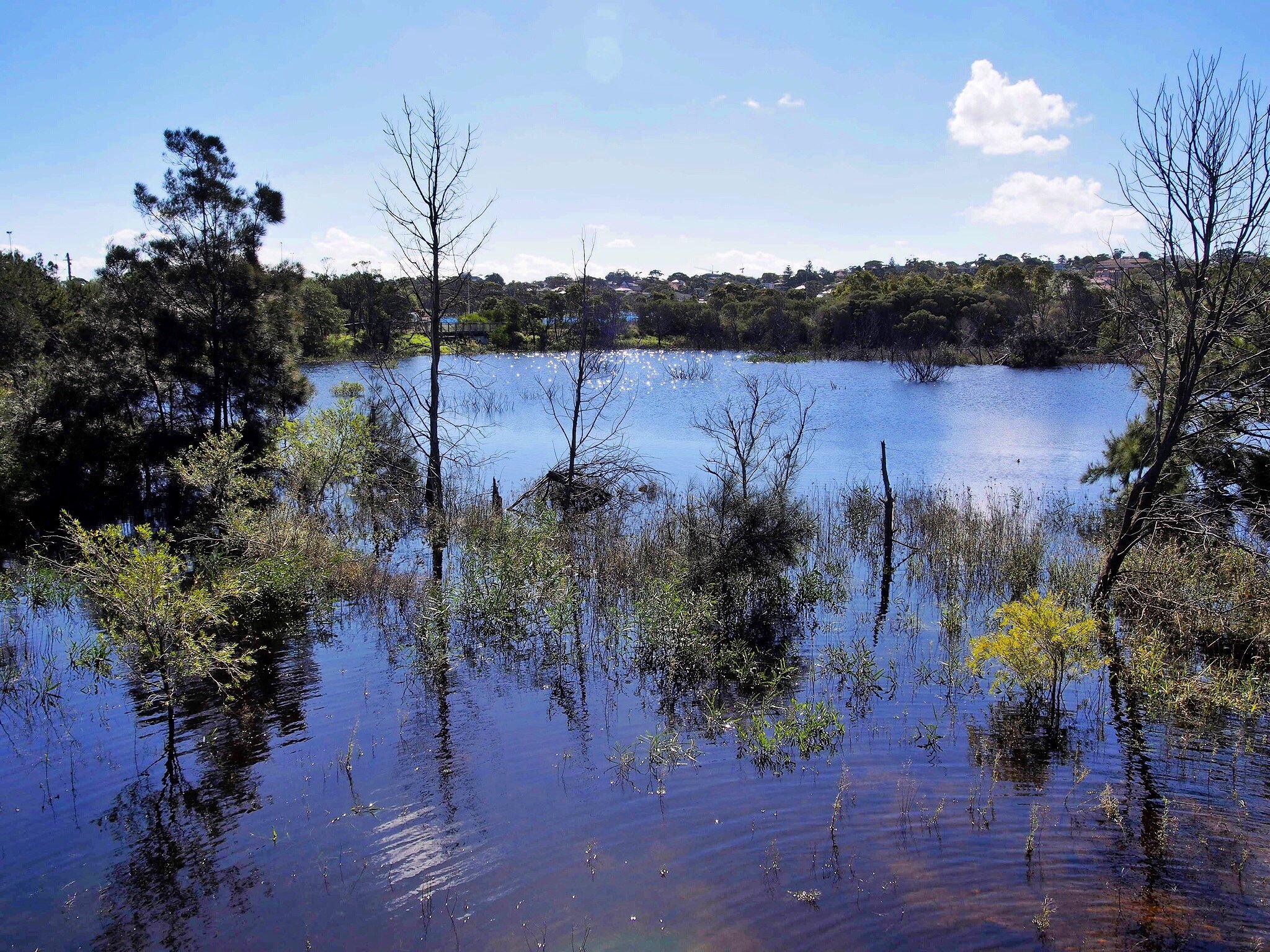
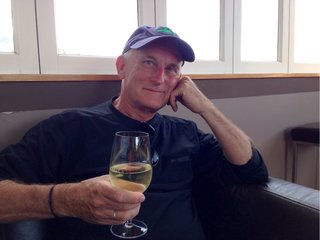
Russ Grayson
The cycle turns…
In Randwick Environment Park, the ephemeral wetland is again full… for awhile, anyway...
Waters that glitter in the Autumn sunlight…
Story and photos made in Randwick Environment Park by Russ Grayson — www.pacific-edge.info
The afternoon reflects off the lake, creating bright highlights that shimmer and move. Casuarina trees, happy to have wet feet, persist over the cycles of flood and dryness.
In the distance, a viewing platform providing an overview of the wetland.
In the distance, a viewing platform providing an overview of the wetland.
AGAIN, NATURE'S CYCLES TURN…
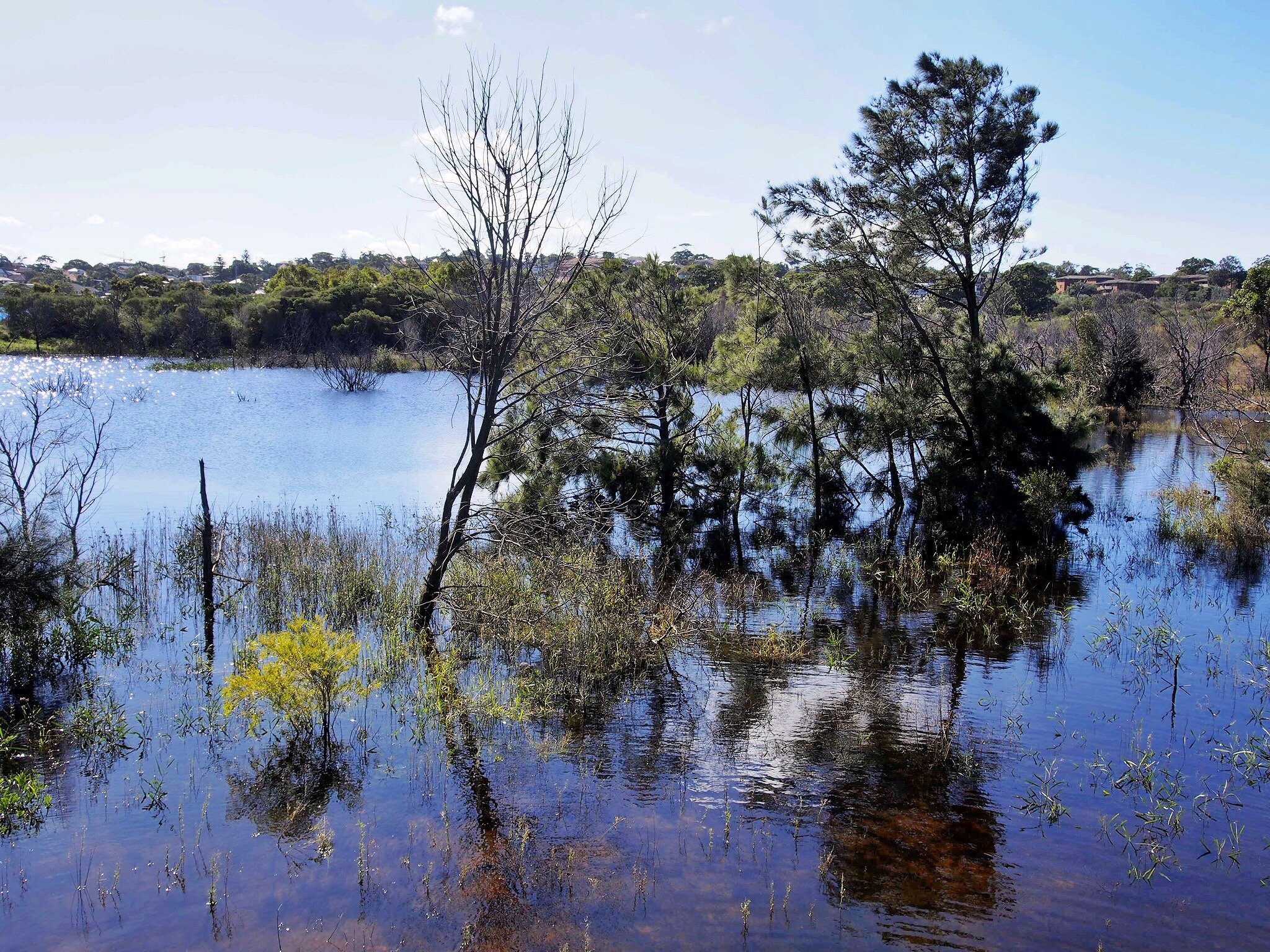
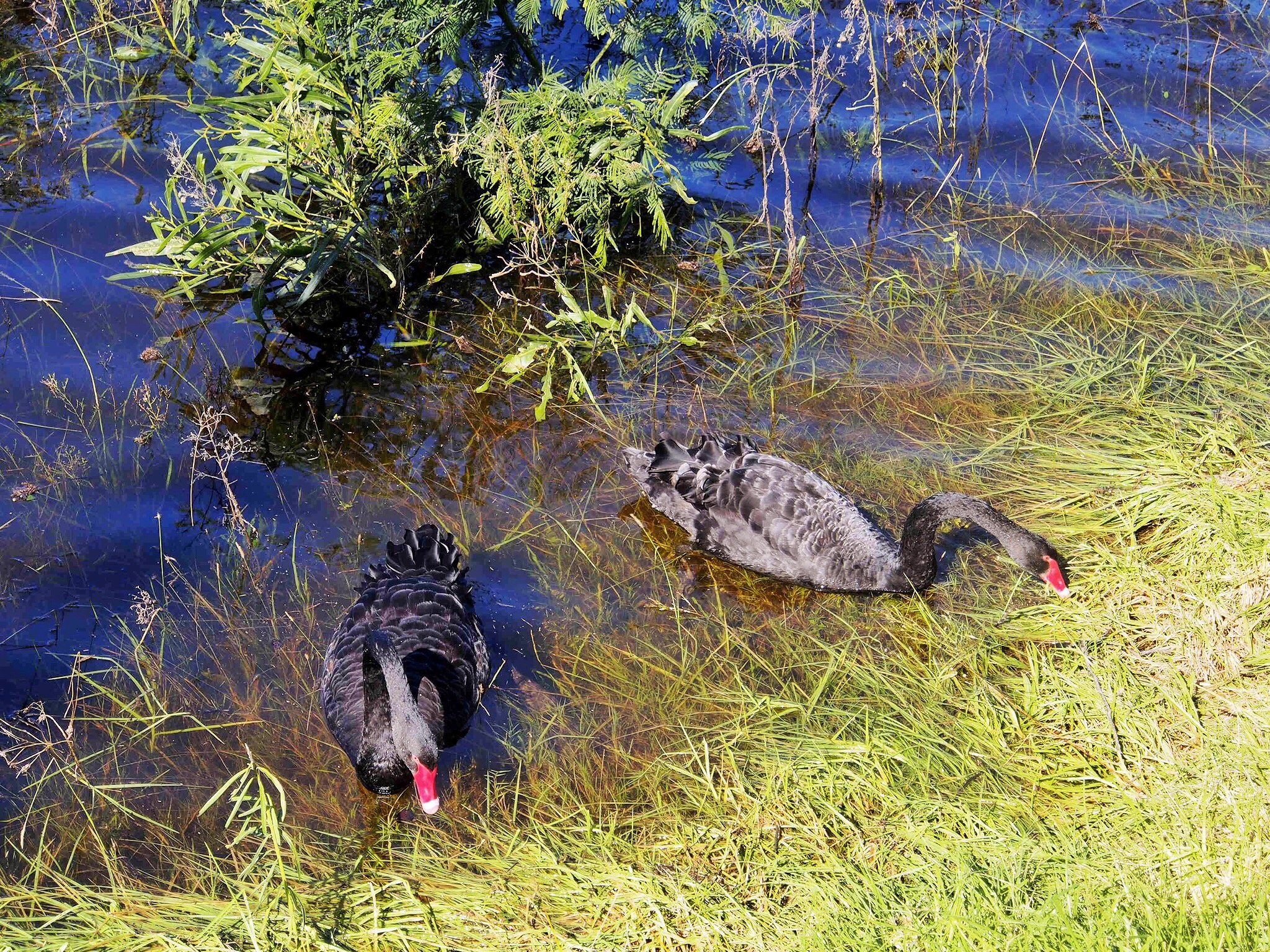
On the still waters reflections form only to be ruffled by the passing of a light breeze. In this way their ephemerality reflects that of the wetland itself as it comes and goes with the rains and the dry.
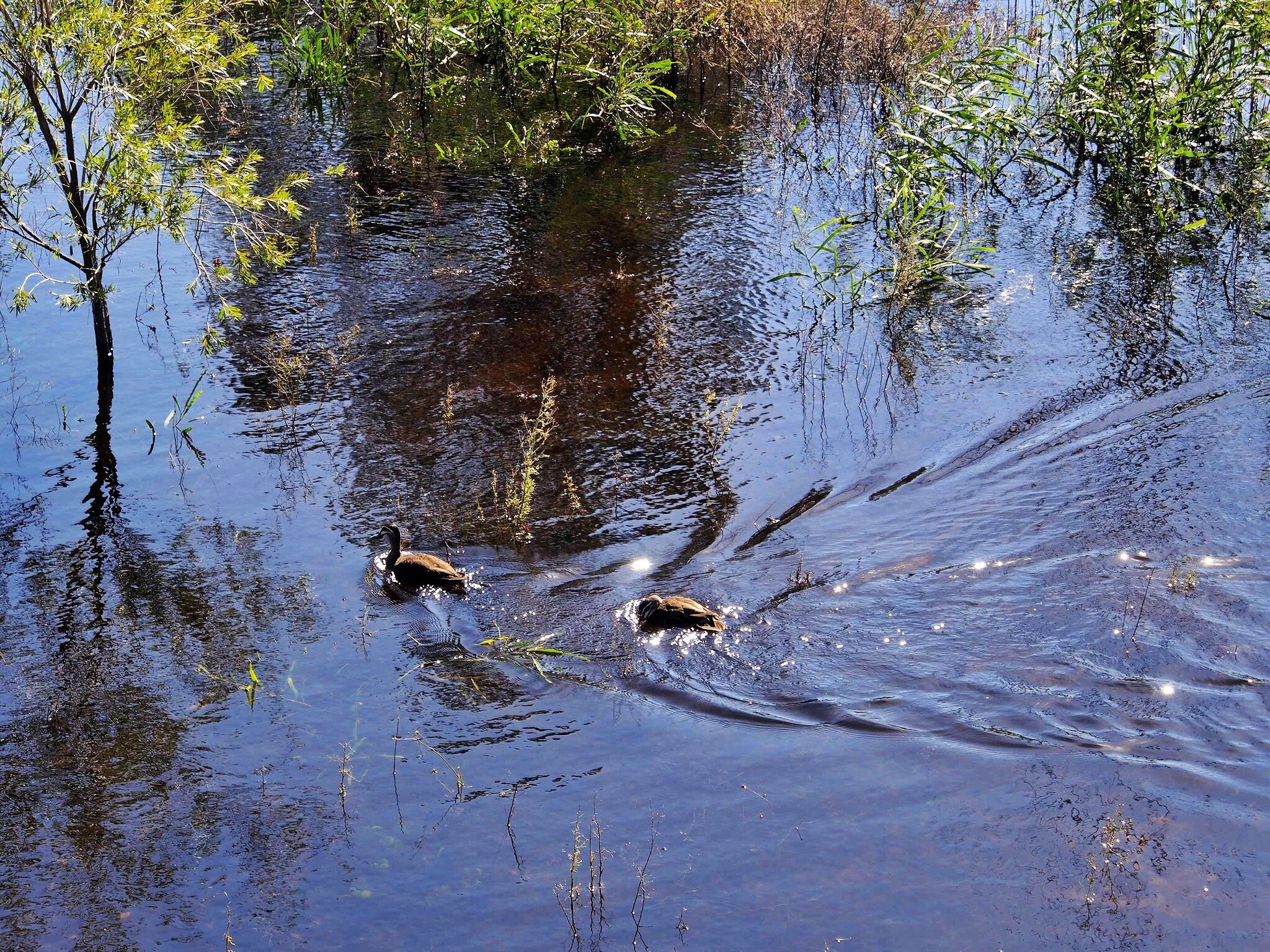

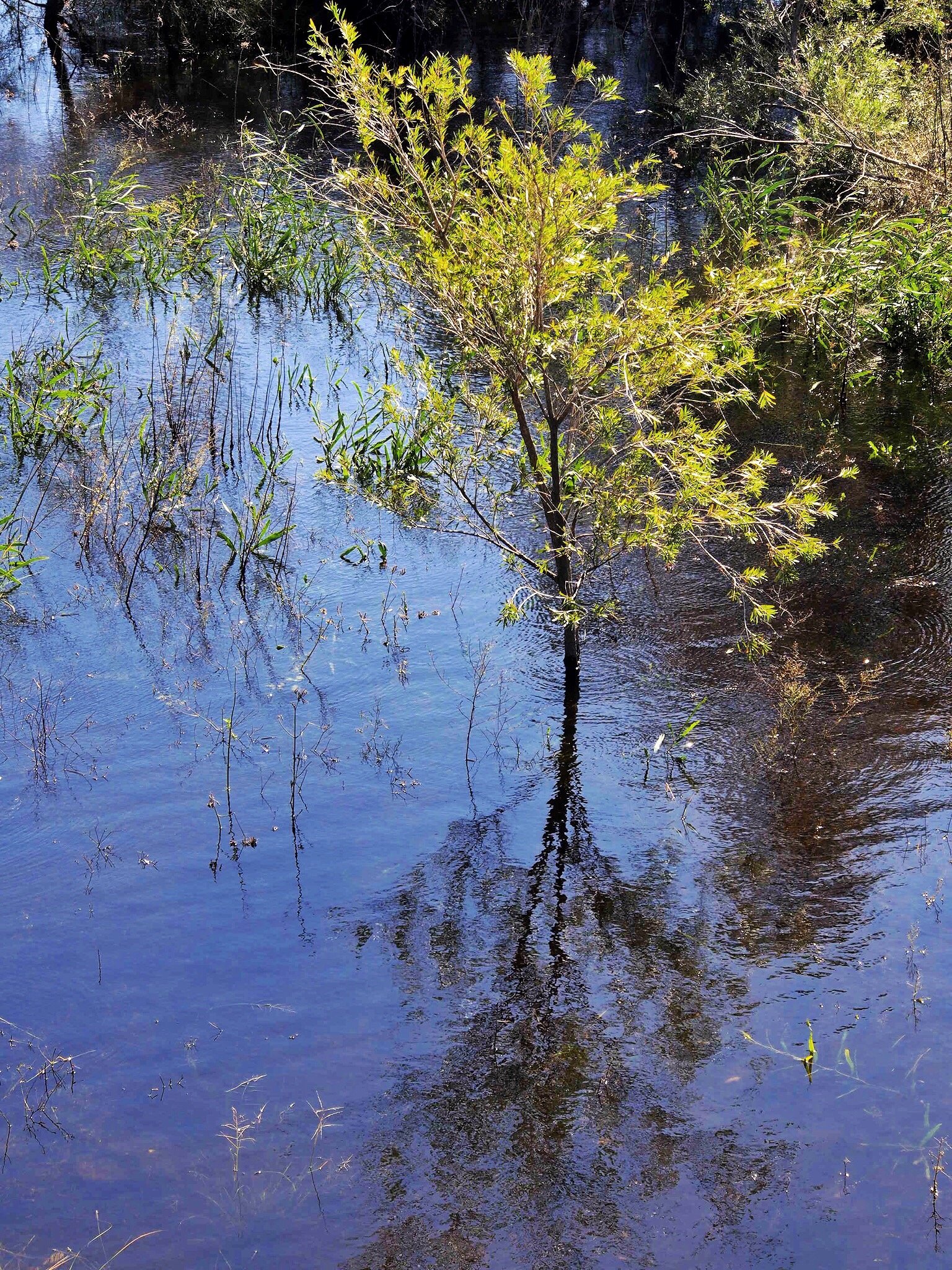
Concealed, not hidden…
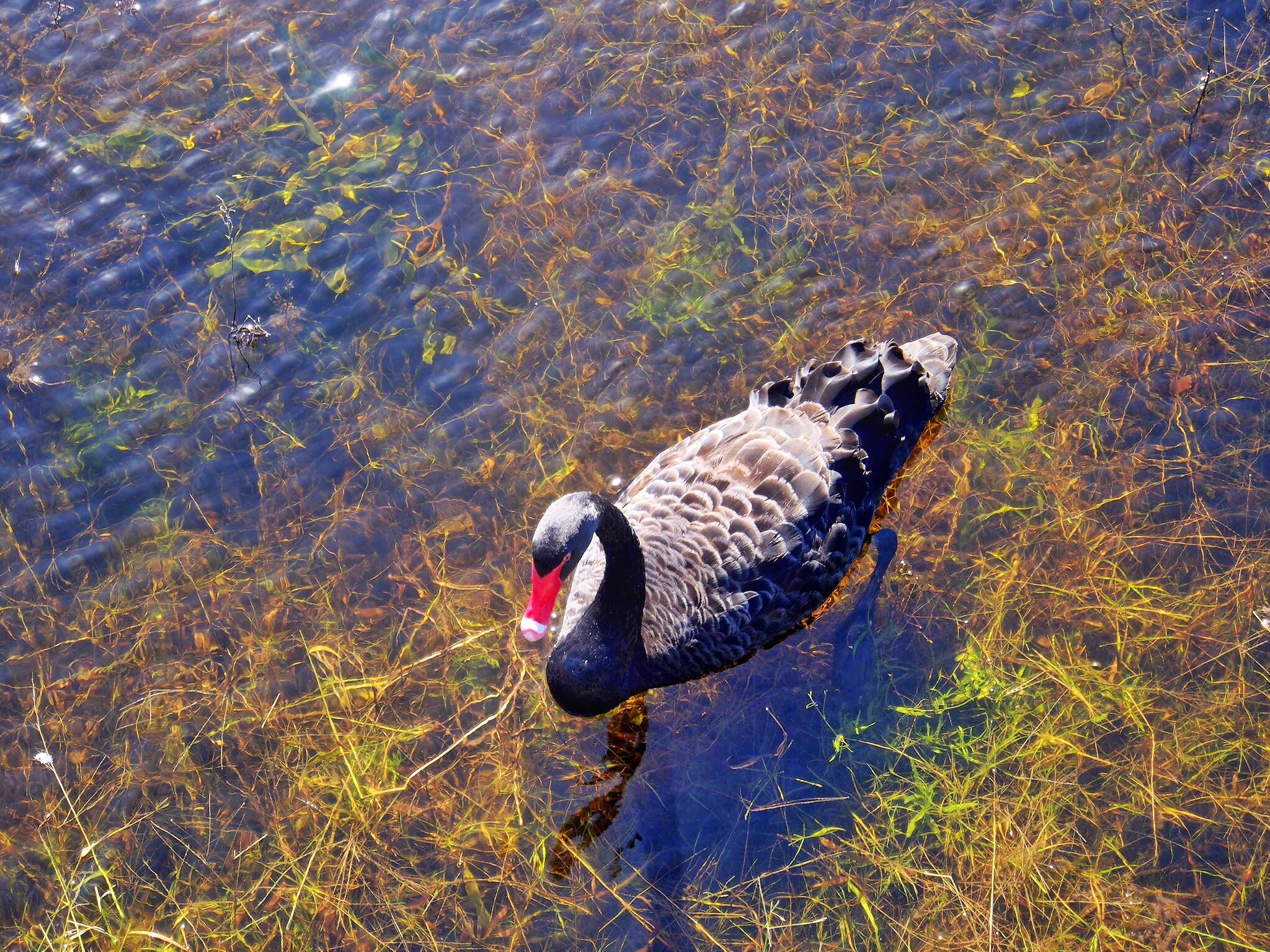
If you know where to find it you can follow an informal track along the lakeside. The start is tucked away beyond a sandy stretch… concealed rather than hidden.
Honking… pecking…
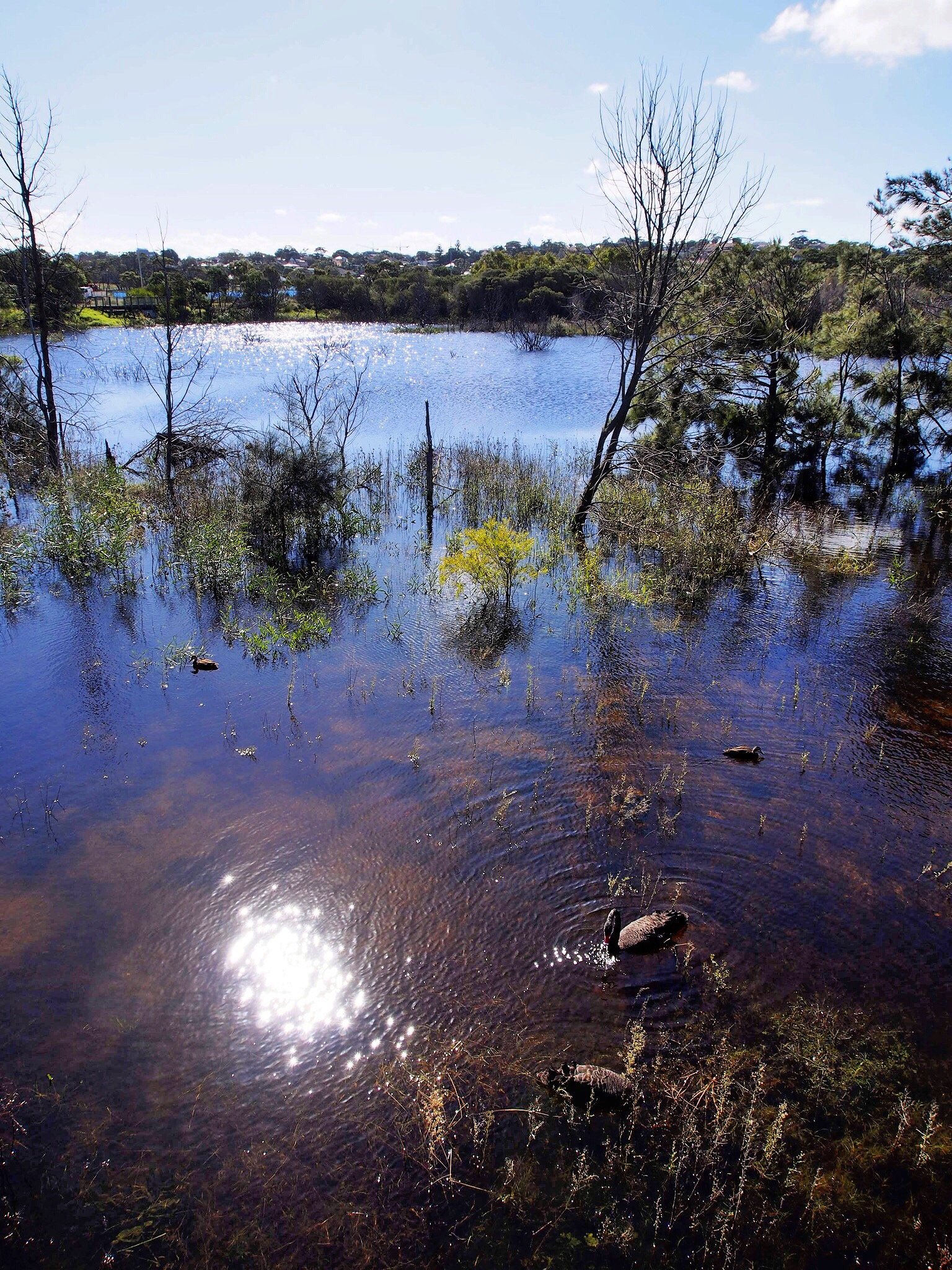
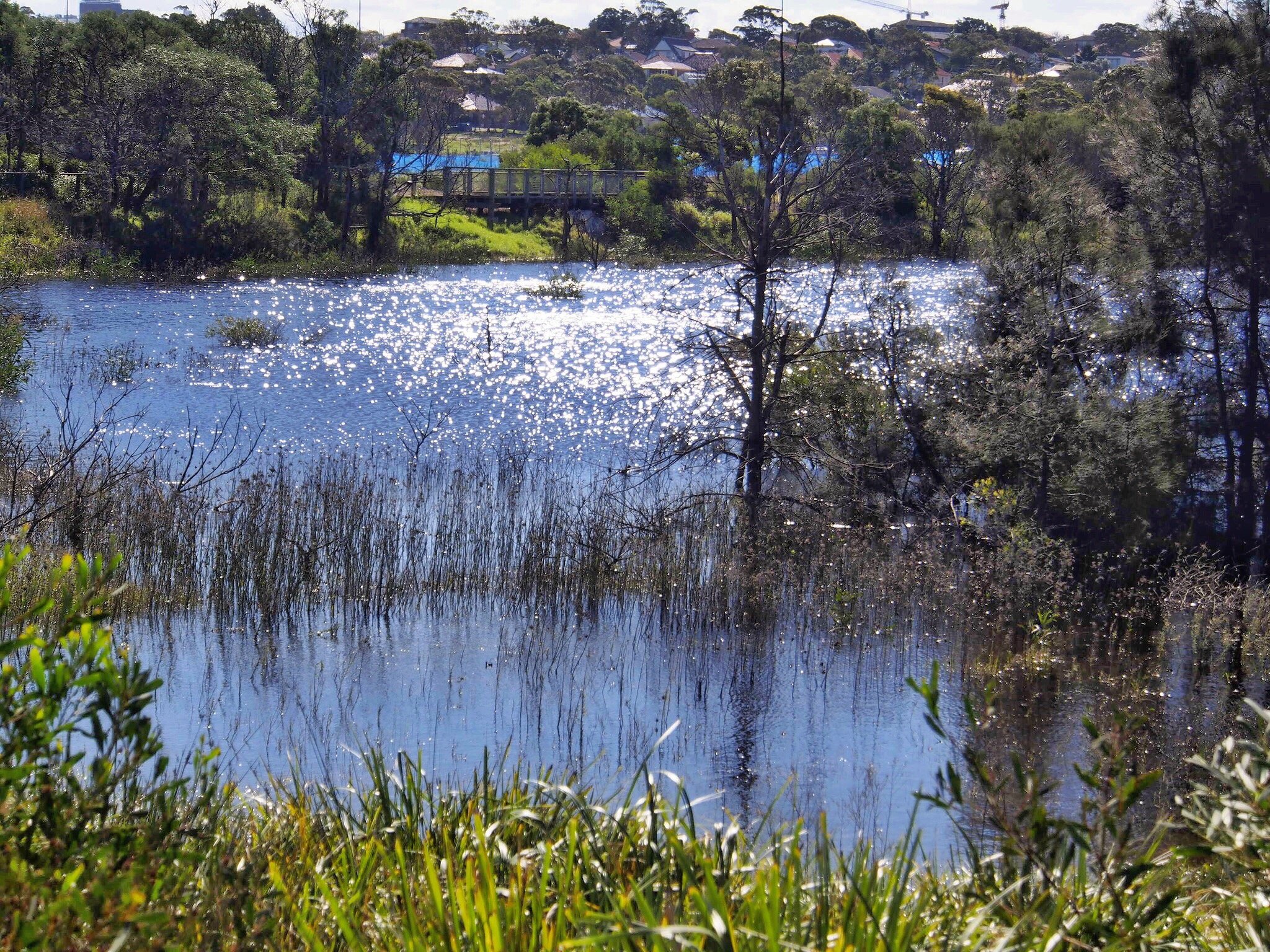
The water is back and so too are the black swans. You see them on the water margin, dipping their heads to take food under the surface or nibbling at something on the shore.
See an earlier photo essay on Randwick Environment Park's ephemeral wetland: https://www.storehouse.co/stories/195c-more-habitat-than-swamp
As if to show that it is a dynamic system rather than something simple and static, the filling and draining of the wetland makes us aware of the changeability of nature and how each change brings new opportunity… whether to the water birds that come and go or to the grasses that follow the flooding.
This, then is the cycle of nature here in Sydney's coastal Eastern Suburbs, in this small remnant of what was, this tiny patch of remnant bush and wetland.
This, then is the cycle of nature here in Sydney's coastal Eastern Suburbs, in this small remnant of what was, this tiny patch of remnant bush and wetland.
Nature's cycle revealed…
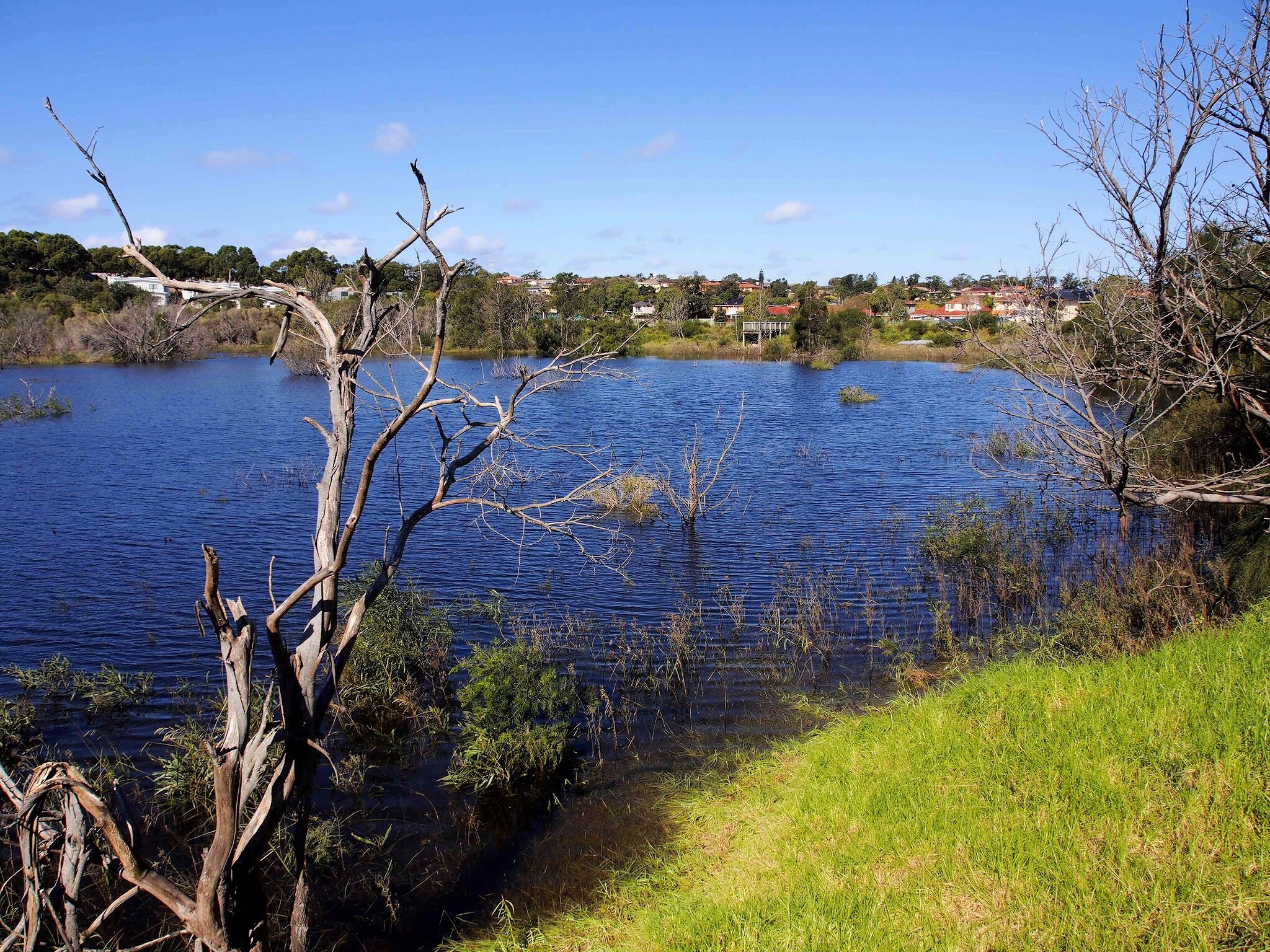
Native ducks glide languidly over the surface leaving only a wake to announce their passage.
There's an assortment of these brown birds when the lake fills… but where do they go when dry weather returns and the lake empties?
There's an assortment of these brown birds when the lake fills… but where do they go when dry weather returns and the lake empties?
NATURE'S CYCLES repeat… and once again the wetland is full.
Three weeks ago there was grassland where now the water reflects the blue of the mid-Autumn sky. Three weeks ago there was only a handful of ibis where there are now black swan, native duck and an entire party of white ibis.
How do these water birds know when this ephemeral wetland, this small, temporary lake, is filled? However that might be, know they do, and their arrival marks a renewed cycle in this urban habitat of frog and avifauna as rains fill what was previously empty. The mid-Autumn rains that brought their grey skies and sogginess to Sydney have been good news for the fathered and amphibious inhabitants who, somehow, know when it is time to once again return to this small urban lake.
Drier weather, as it returns, as it must, will bring an emptying of the wetland as its waters evaporate and filter into the aquifer. Steadily, the waters will reduce, exposing rock and log until only a large puddle is all that remains out in the middle of what was the lake.
Then, once again, the grasses will reclaim the lakebed and the water birds will flap their wings one last time in saying farewell to this, their temporary home. But, as they depart for places unknown, do they know somewhere deep in their consciousness that they will return? That their signal will be renewed rains that will fill the wetlands to its brim again, rains to flood the grassland and cover them with an ephemeral layer of water that will reflect the blue of the sky?
Such is nature's cycle here in Randwick, such is our urban nature and such is the experiencing of nature's cycles that makes this… this small, ephemeral lake in Randwick Environment Park… our nature in the city… our new nature.
Three weeks ago there was grassland where now the water reflects the blue of the mid-Autumn sky. Three weeks ago there was only a handful of ibis where there are now black swan, native duck and an entire party of white ibis.
How do these water birds know when this ephemeral wetland, this small, temporary lake, is filled? However that might be, know they do, and their arrival marks a renewed cycle in this urban habitat of frog and avifauna as rains fill what was previously empty. The mid-Autumn rains that brought their grey skies and sogginess to Sydney have been good news for the fathered and amphibious inhabitants who, somehow, know when it is time to once again return to this small urban lake.
Drier weather, as it returns, as it must, will bring an emptying of the wetland as its waters evaporate and filter into the aquifer. Steadily, the waters will reduce, exposing rock and log until only a large puddle is all that remains out in the middle of what was the lake.
Then, once again, the grasses will reclaim the lakebed and the water birds will flap their wings one last time in saying farewell to this, their temporary home. But, as they depart for places unknown, do they know somewhere deep in their consciousness that they will return? That their signal will be renewed rains that will fill the wetlands to its brim again, rains to flood the grassland and cover them with an ephemeral layer of water that will reflect the blue of the sky?
Such is nature's cycle here in Randwick, such is our urban nature and such is the experiencing of nature's cycles that makes this… this small, ephemeral lake in Randwick Environment Park… our nature in the city… our new nature.
A chorus of honking white ibis patrol the shoreline and shallows, calling… and pecking at some edible morsel they find.
Social birds, they nest in the bushy trees around the ephemeral wetland.
Social birds, they nest in the bushy trees around the ephemeral wetland.
